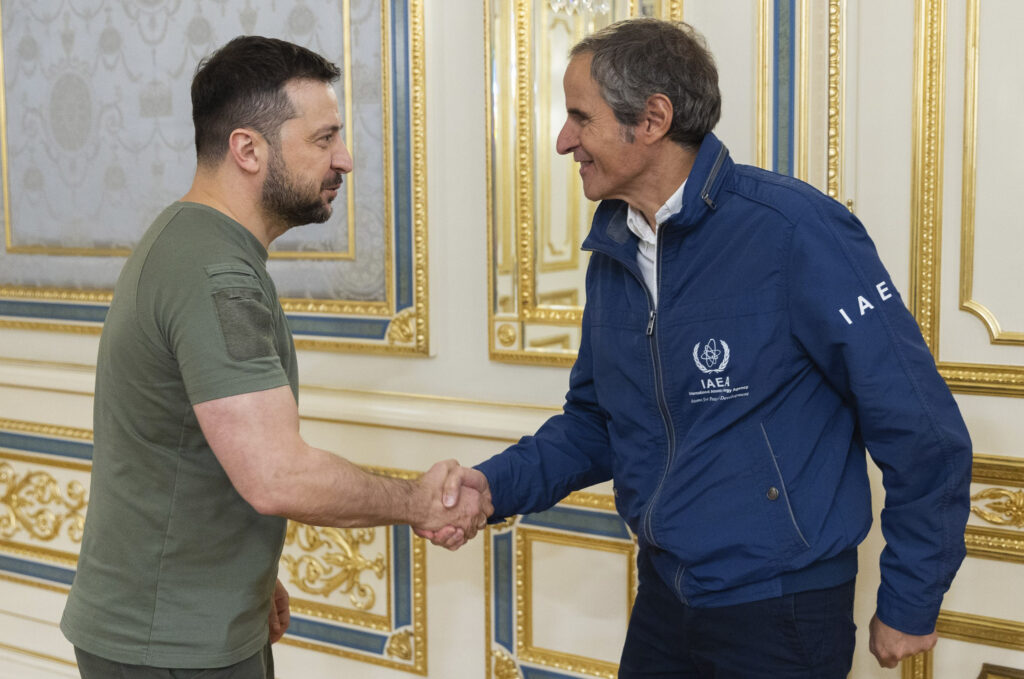IAEA: Zaporizhzhia Nuke belongs to Ukraine
Newslooks- KYIV, Ukraine (AP)
The head of the U.N.’s atomic energy agency says it’s doubling to four the number of inspectors that it plans to deploy to the Zaporizhzhia nuclear power plant in a Russian-controlled area of southern Ukraine as fighting continues in the region, threatening its safety.
During a visit Thursday to the Ukrainian capital, Director-General Rafael Grossi of the International Atomic Energy Agency deplored how workers in Europe’s biggest nuclear power plant are facing “almost unbearable circumstances.”
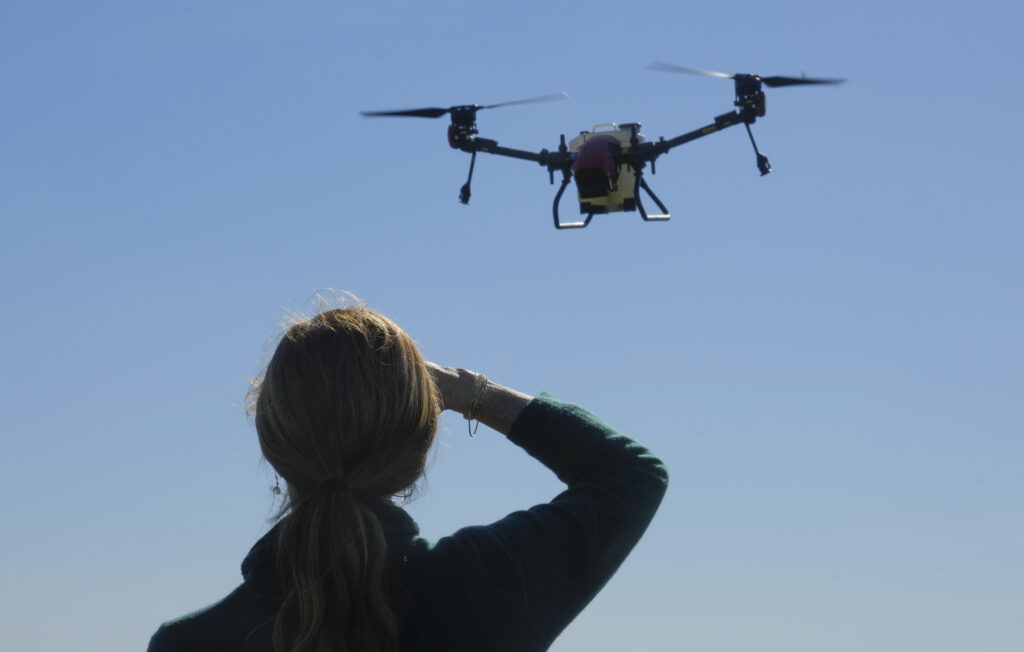
He said he would take up that issue and hopes of establishing a secure protection zone around the nuclear power station during talks with an unspecified “very high-level” official when he travels soon to Moscow.
Grossi emphasized that despite Russia’s proclaimed — and widely criticized — annexation of the Zaporizhzhia oblast, or region, the plant remains a Ukrainian facility that belongs to state-run company Energoatom.
Earlier Thursday, a local official said Russian missiles hit apartment buildings in the nearby city of Zaporizhzhia, killing three people and wounding at least 12.
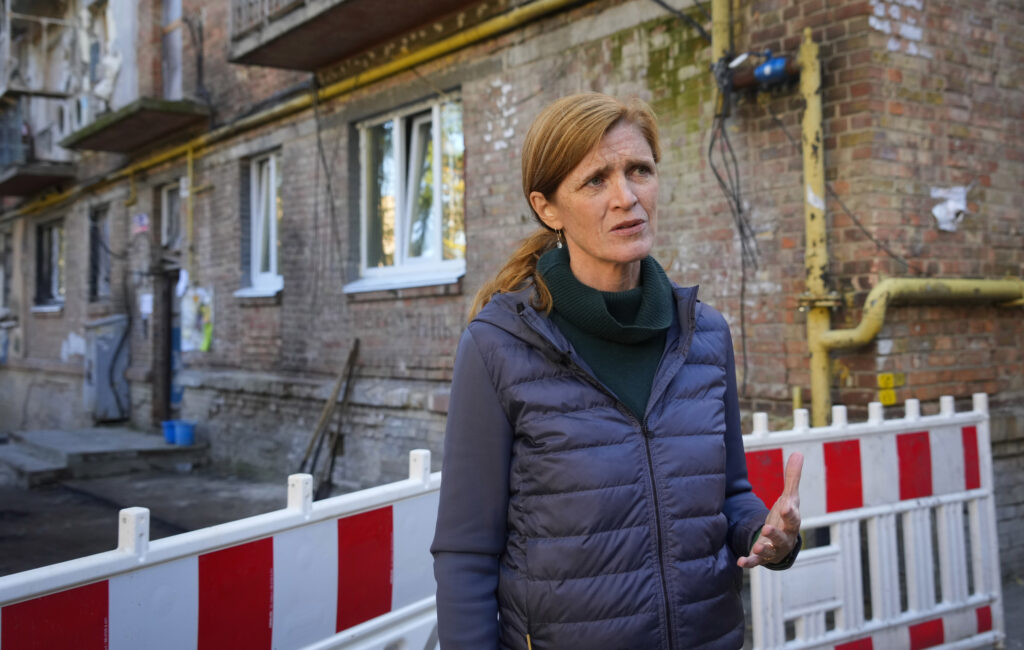
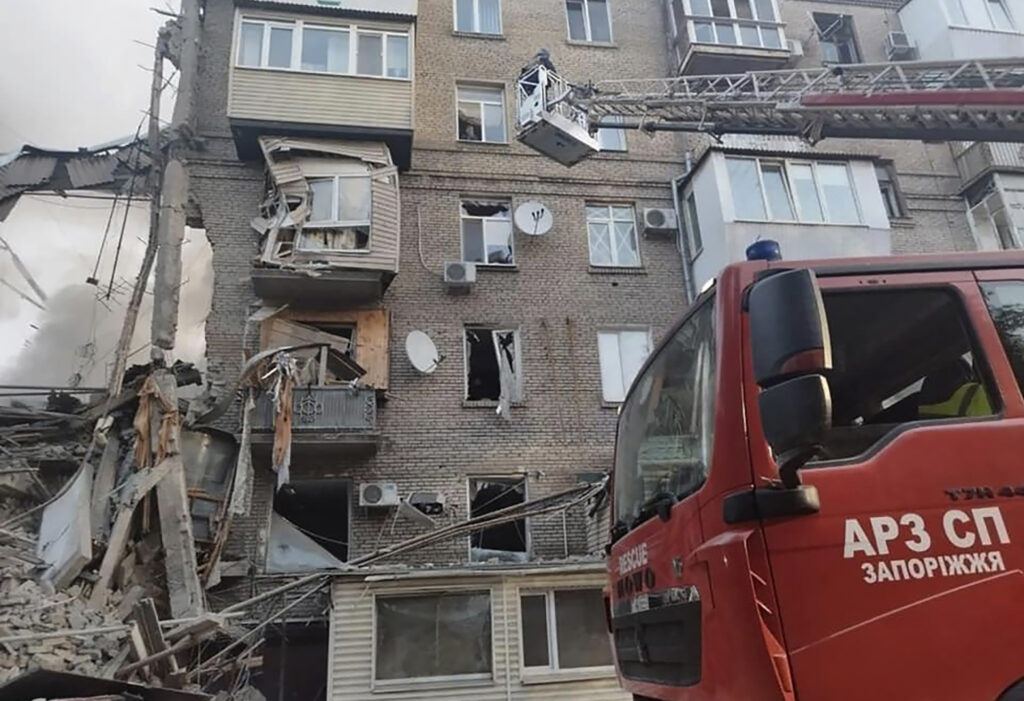
The head of Ukraine’s human rights commission says Russian authorities detained hundreds of Ukrainians as they neared Russia’s border with Estonia.
Dmytro Lubinets wrote in a post on his Facebook page on Thursday that Russians “took them away on trucks to an unknown destination” a day earlier. He cited information from the Estonian Interior Ministry about the transfers.
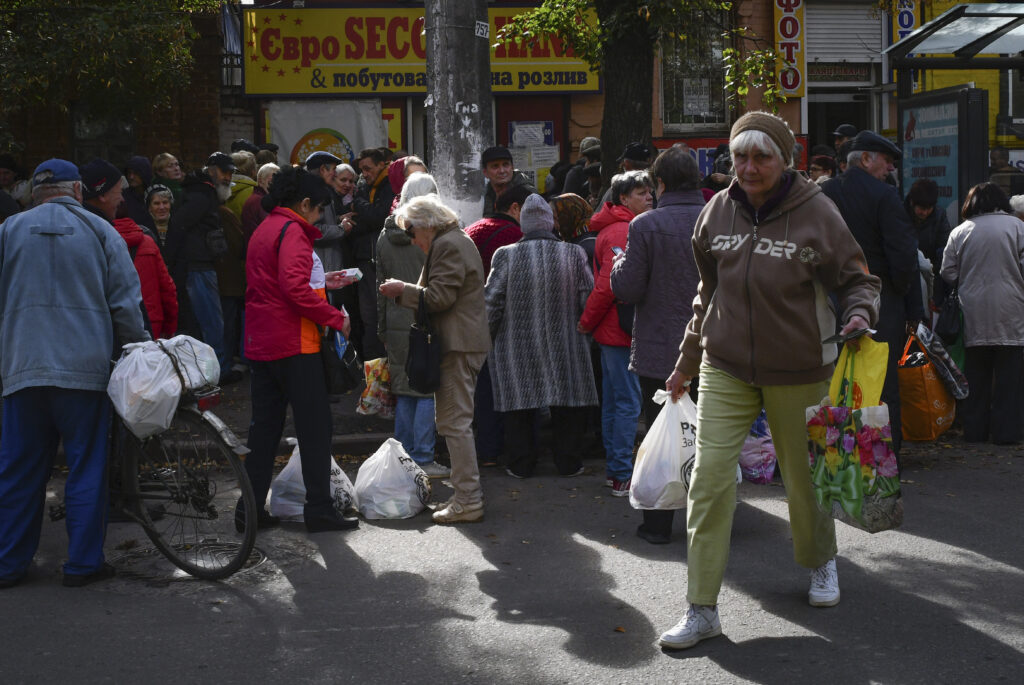
Amid Russia’s war in Ukraine, most of those Ukrainians had fled their country through Russia and Crimea and were seeking ways to enter the European Union — Estonia is a member state — or find a way to return home, Lubinets wrote.
Some travelers, including women, the elderly, and children, were waiting to cross the Russia-Estonia border in cold, humid weather without proper clothes or food, he said, adding that he planned to bring up the matter with Russia’s commissioner for human rights.
Lubinets noted that a mission from the Organization for Security and Cooperation in Europe, which counts both Russia and Ukraine as members, was expected to meet next week with Ukrainians who had been processed through Russian “filtration camps.”
Also Thursday, Estonian Foreign Minister Urmas Reinsalu said: “We condemn the Russian Federation for not allowing war refugees to cross the border,” saying such actions could amount to provocations by Moscow along the EU-Russia border.
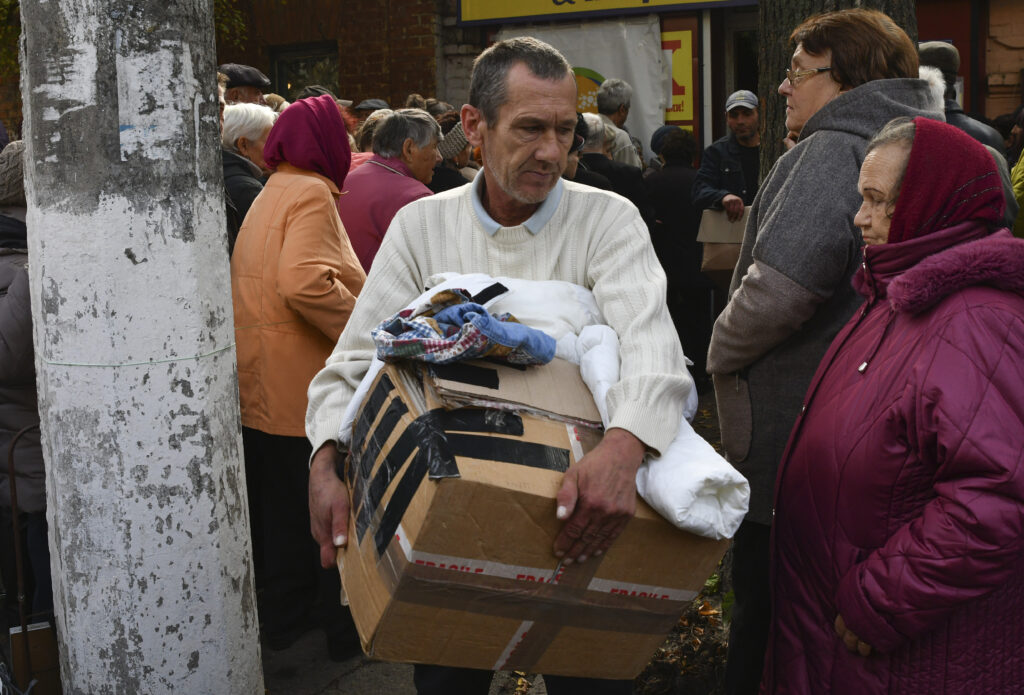
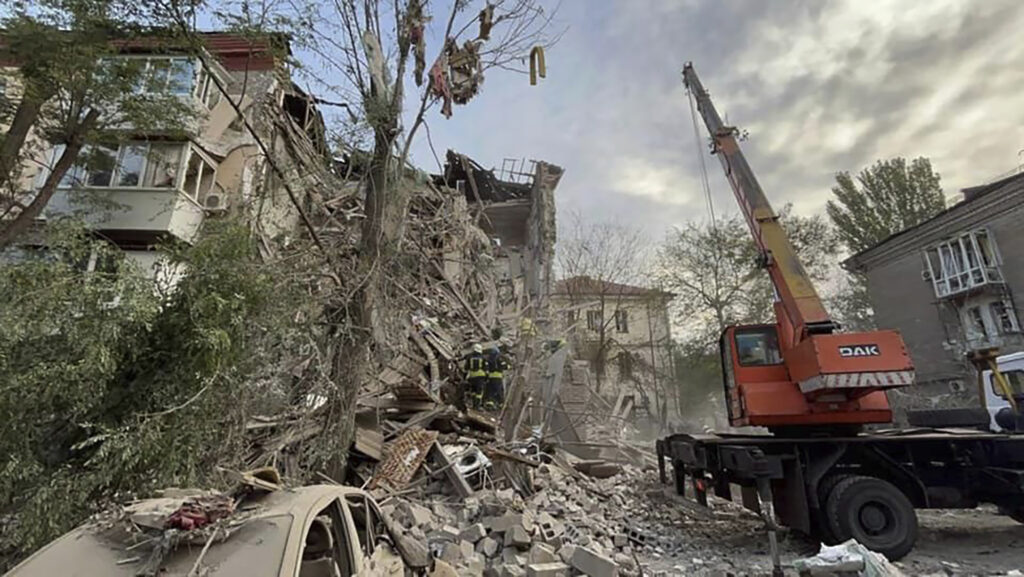
Ukrainian forces have retaken 400 square kilometers (155 square miles) of territory in the southern Kherson region, so far this month as they continue to push Russian troops back in the south and east, Ukraine’s southern military command says.
Natalia Humeniuk, spokesperson for the Ukrainian military’s Operational Command South, said in a briefing Thursday that the situation along the southern front was rapidly changing and remained complicated.
Ukraine has recaptured 29 settlements in the oblast since Oct. 1, Oleksii Hromov, deputy chief of the Main Operational Department of the Ukrainian army’s General Staff, told a separate briefing.
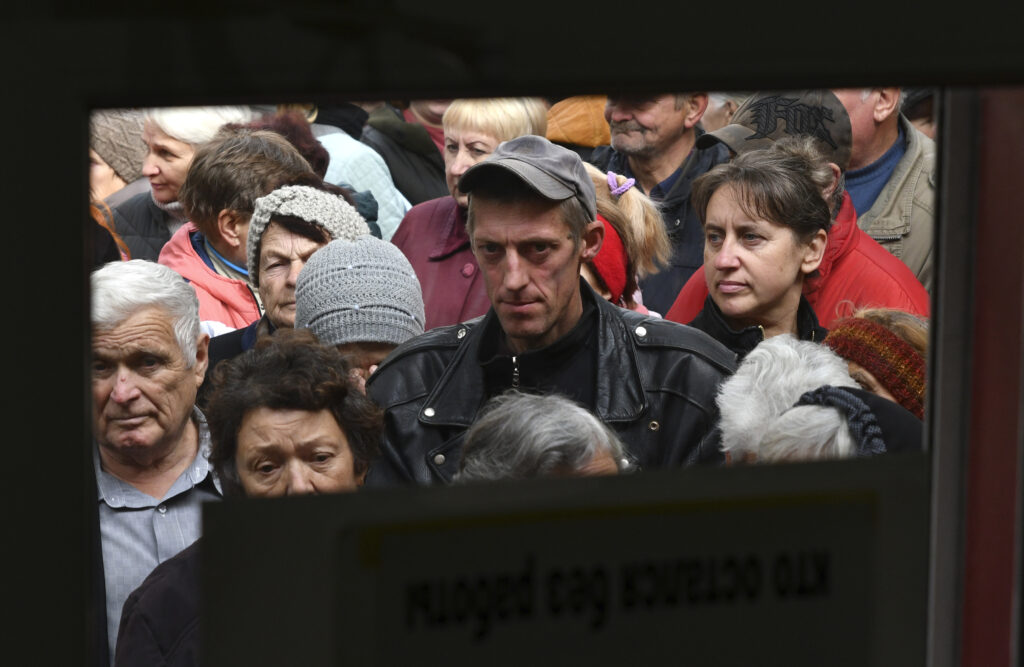
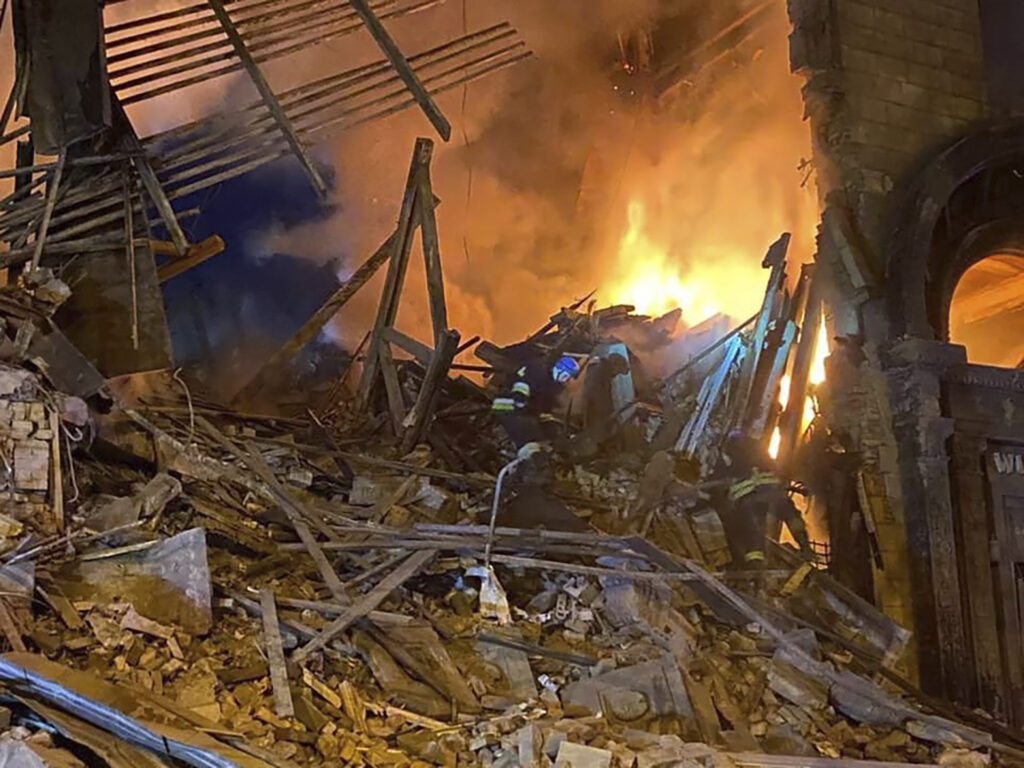
The European Union on Thursday froze the assets of an additional 37 people and entities tied to Russia’s war in Ukraine, bringing the total of EU blacklist targets to 1,351.
The newly sanctioned people include officials involved in last week’s illegal Russian annexation of — and sham referenda in — the Ukrainian regions of Donetsk, Luhansk, Kherson and Zaporizhzhia.
The latest sanctions, published in the EU’s Official Journal, also widen trade bans against Russia and lay the ground for a price cap on Russian oil being prepared with other G-7 members. The new commercial curbs hit an estimated 7 billion euros ($6.9 billion) of EU imports of Russian goods including steel, plastics, textiles and non-gold jewelry.
The wider EU prohibition on exports to Russia covers such products as coal, electronics used in Russian weapons and aircraft components.
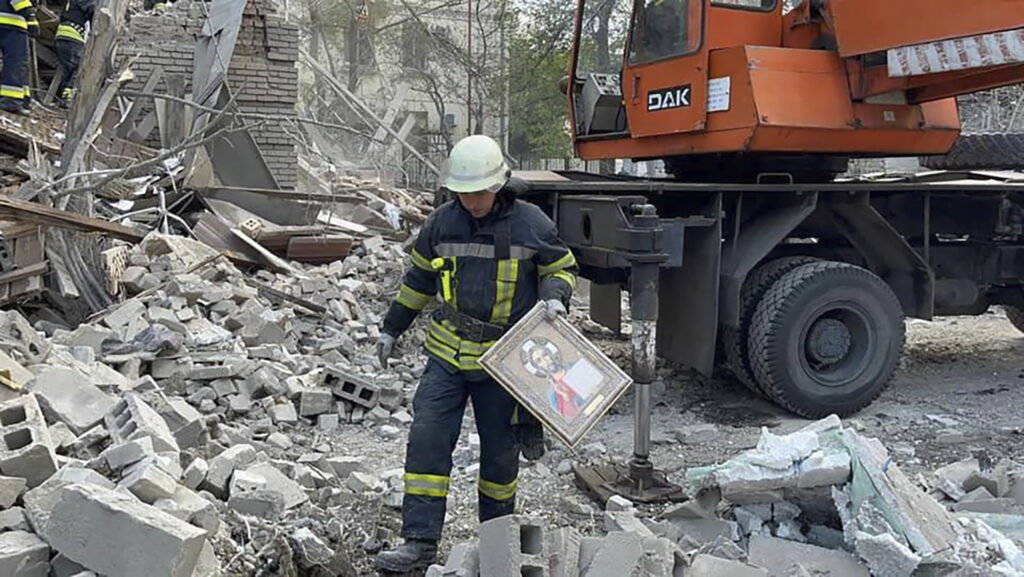
Norway on Thursday said that Russian fishing vessels can only call at three Arctic ports ports, and that all Russian vessels arriving at these ports will be checked.
Russian fishing boats only will be allowed in three Arctic ports — Kirkenes, Tromsø and Båtsfjord.
“We now have information which indicates that there is a need to increase the control of Russian fishing vessels, Foreign Minister Anniken Huitfeldt said.
“The recent serious developments with Russia’s unacceptable annexation of Ukraine, the attacks on gas pipelines in the Baltic Sea and increased drone activity, means that the government has further tightened preparedness.
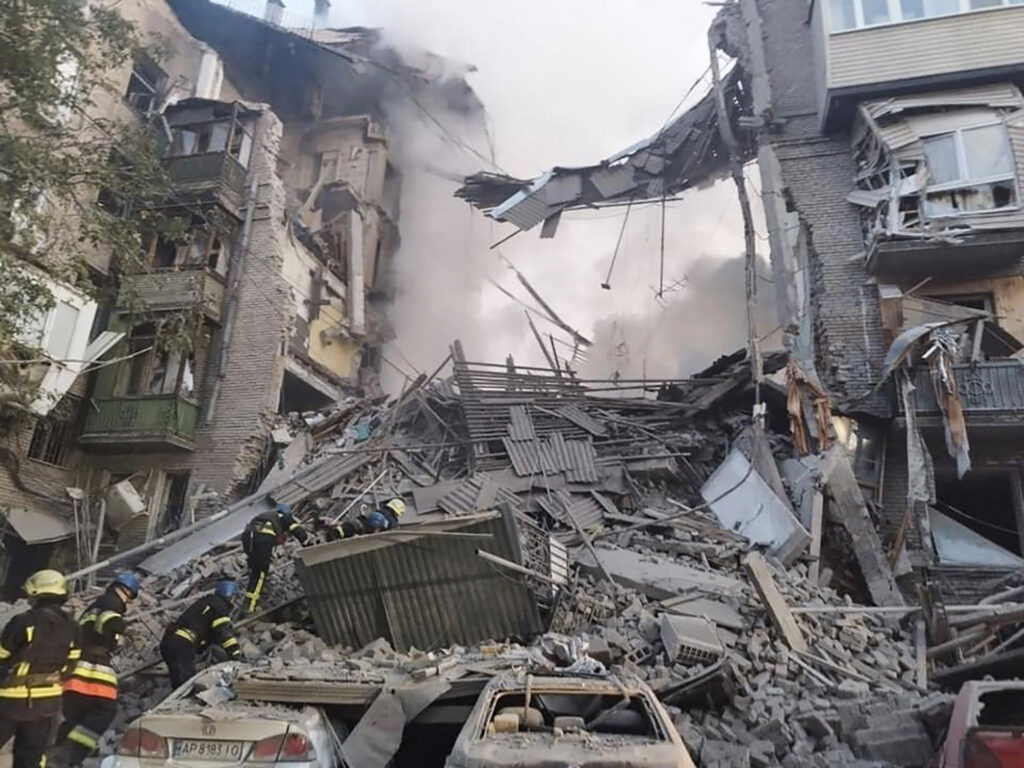
“This will make it more difficult to use Russian fishing vessels for illegal activities, for example by circumventing export regulations, ”Justice Minister Emilie Enger Mehl added.
In April, the European Union, of which Norway is not a member, banned Russian vessels from entering EU ports. Norway followed suit with the exception of fishing boats, which led to criticism from the Norwegian opposition.
Authorities in Norway, a major oil and gas producer, have reported several drone sightings near offshore installations in the North Sea.

